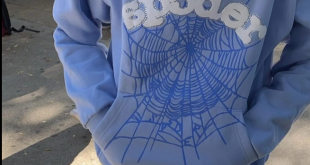Introduction
Balenciaga, a brand synonymous with high fashion, has experienced an incredible evolution over the years. What started as a traditional couture house has now become one of the most forward-thinking names in the fashion world. Known for its avant-garde designs and luxurious Balenciaga clothing, the brand has managed to blend heritage with modernity, appealing to both classic fashion lovers and contemporary trendsetters.
In this article, we will explore the rise of Balenciaga, from its origins rooted in heritage to its current status as a cutting-edge fashion brand. We’ll also dive into the transformation of its design aesthetics, how it embraced innovation, and the cultural impact it has had on fashion.
The Origins of Balenciaga: A Legacy in Couture
The Birth of the Brand
Balenciaga was founded by Spanish designer Cristóbal Balenciaga in 1919, in San Sebastián, Spain. From the outset, Balenciaga set itself apart with its focus on craftsmanship, precision, and luxurious materials. Cristóbal was known for his technical expertise and dedication to perfecting the art of clothing construction. His designs were characterized by clean lines, fluid shapes, and a sense of elegance that quickly made the brand a favorite among European royalty and aristocrats.
Cristóbal Balenciaga’s Vision
Cristóbal Balenciaga was more than just a fashion designer; he was a master couturier. His ability to craft garments that flattered the female form while maintaining structure and sophistication earned him the title of “The King of Fashion.” His influence extended to other designers like Christian Dior and Coco Chanel, who revered his talent.
Balenciaga’s early designs were rooted in traditional Spanish culture, with references to flamenco dresses and matador costumes. However, it was his ability to innovate within the framework of classic couture that made him a trailblazer. His designs were timeless, elegant, and often ahead of their time.
Balenciaga Clothing: A Revolution in Fashion
The Shift to Modernity
While Balenciaga initially built its reputation on heritage and timeless elegance, the brand underwent a radical transformation in the late 20th and early 21st centuries. After Cristóbal Balenciaga retired in 1968, the brand remained dormant until it was revived in the 1980s. This revival marked the beginning of Balenciaga’s journey from classic couture to modern, cutting-edge style.
Nicolas Ghesquière: A New Era for Balenciaga Clothing
In 1997, Nicolas Ghesquière was appointed as the creative director of Balenciaga, and his tenure signaled a bold new direction for the brand. Ghesquière brought a futuristic, experimental approach to the design of Balenciaga clothing. He introduced architectural shapes, deconstructed silhouettes, and high-tech fabrics, which transformed the brand into a leader of modern fashion.
Under Ghesquière’s leadership, Balenciaga clothing became synonymous with innovation. His ability to balance the brand’s heritage with contemporary aesthetics made the collections highly sought after by fashion-forward individuals. Pieces like the “Lariat” motorcycle bag and structured coats became iconic, and Balenciaga reestablished itself as a brand that was not afraid to push boundaries.
Balenciaga’s Influence on Streetwear
One of the most significant shifts in the rise of Balenciaga was its embrace of streetwear culture. By incorporating elements of casual and urban fashion into its designs, Balenciaga clothing evolved to reflect the changing tastes of modern consumers. This shift became even more pronounced when Demna Gvasalia took over as creative director in 2015.
The Demna Gvasalia Era: A Bold New Direction
Reinventing the Brand
Demna Gvasalia, who had previously founded the streetwear-focused brand Vetements, brought a fresh, bold energy to Balenciaga. His designs pushed the boundaries of conventional fashion and brought a new wave of attention to the brand. Under his leadership, Balenciaga embraced oversized silhouettes, exaggerated proportions, and normcore aesthetics, blending high fashion with street style.
Gvasalia’s approach to Balenciaga clothing was rooted in deconstruction and reconstruction, giving traditional pieces a modern, rebellious twist. He transformed everyday items, such as hoodies, sneakers, and puffer jackets, into high-fashion statements. The Triple S sneaker, one of the most recognizable pieces from Balenciaga, became a symbol of this new era, blending luxury with the casualness of streetwear.
The Impact of Social Media and Pop Culture
Another factor that contributed to Balenciaga’s meteoric rise was its strong presence in pop culture and social media. Celebrities, influencers, and fashion enthusiasts began to embrace Balenciaga clothing, and its designs quickly gained traction on platforms like Instagram. High-profile figures such as Kim Kardashian, Kanye West, and Rihanna were often seen wearing Balenciaga, further cementing the brand’s status as a cultural force.
Balenciaga’s ability to create designs that resonated with a younger, digital-savvy audience played a key role in its success. The brand’s collaborations with artists and musicians helped bridge the gap between high fashion and popular culture, making Balenciaga clothing more accessible and desirable to a broader audience.
The Iconic Balenciaga Clothing Pieces
The Balenciaga Speed Trainers
One of the most recognizable pieces from the modern Balenciaga collection is the Speed Trainer. Launched in 2016, these sock-like sneakers took the fashion world by storm. Their minimalist design and comfortable fit made them an instant hit, and they became a staple in both streetwear and high-fashion wardrobes.
The Triple S Sneaker
The Triple S sneaker is perhaps one of the most controversial yet iconic pieces in Balenciaga’s modern collection. Released in 2017, the chunky, oversized shoe embodied the “ugly sneaker” trend that dominated the fashion industry. Despite initial skepticism, the Triple S became a must-have for sneaker enthusiasts and a symbol of Balenciaga’s daring approach to design.
Balenciaga’s Oversized Outerwear
Balenciaga is also known for its oversized outerwear, particularly its puffer jackets and coats. These pieces, characterized by exaggerated proportions and innovative materials, have become a signature of the brand’s aesthetic. The combination of functionality and high fashion makes Balenciaga’s outerwear highly coveted.
Balenciaga’s Influence on the Fashion Industry
Shaping the Future of High Fashion
Balenciaga’s rise from a heritage couture house to a leader in modern fashion has had a profound impact on the industry. The brand’s ability to adapt to changing trends while staying true to its roots has inspired other fashion houses to follow suit. The blending of luxury with streetwear, as seen in Balenciaga clothing, has become a significant trend in the fashion world, influencing brands like Gucci, Louis Vuitton, and Dior.
Sustainability and Innovation
In recent years, Balenciaga has also made strides in sustainability, incorporating eco-friendly materials and practices into its collections. Under Gvasalia’s leadership, the brand has taken steps to reduce its environmental impact while continuing to push the boundaries of fashion innovation. This commitment to sustainability, along with its cutting-edge designs, ensures that Balenciaga remains relevant in an ever-changing industry.
Conclusion
From its origins as a traditional couture house to its current status as a leader in modern fashion, Balenciaga has undergone a remarkable transformation. The brand’s ability to innovate while maintaining its heritage has allowed it to thrive in a rapidly evolving industry. Balenciaga clothing, with its blend of high fashion and streetwear, continues to shape the fashion landscape, influencing both designers and consumers alike.
Whether it’s the timeless elegance of Cristóbal Balenciaga’s original designs or the bold, avant-garde creations of the modern era, Balenciaga remains at the forefront of fashion. As the brand continues to evolve, its influence on the industry is undeniable, and its future looks as bright as ever.
 Daily Blogger News Stay updated with the latest trends and insights. Your reliable source for daily updates and information.
Daily Blogger News Stay updated with the latest trends and insights. Your reliable source for daily updates and information.






